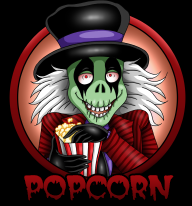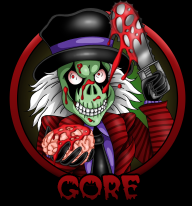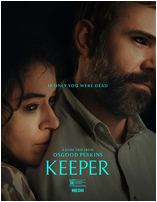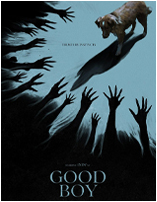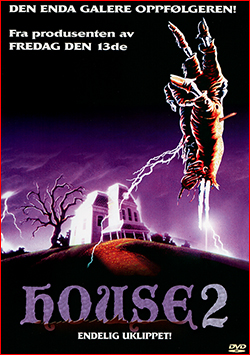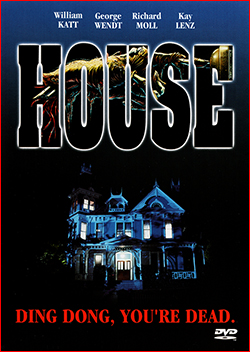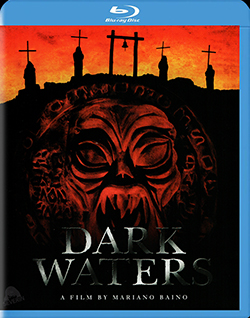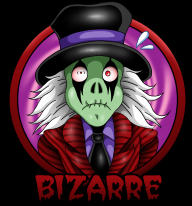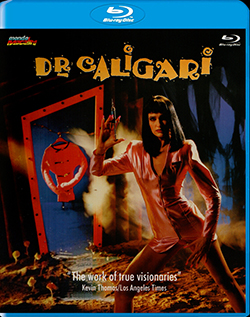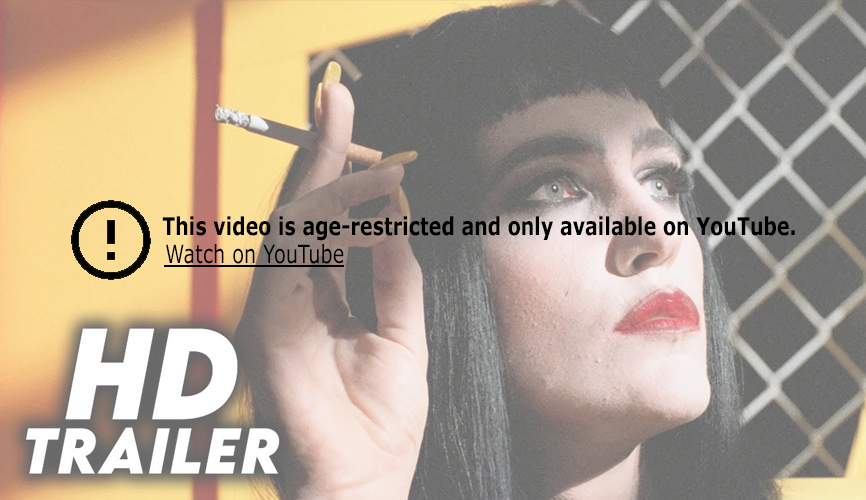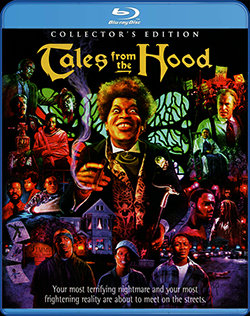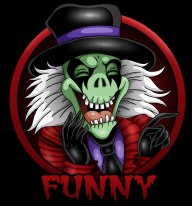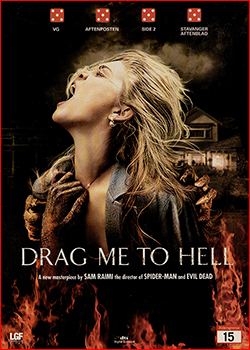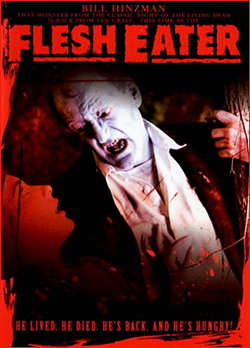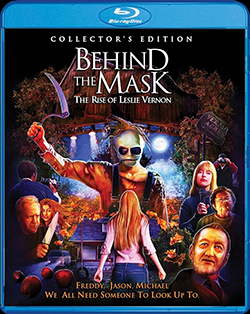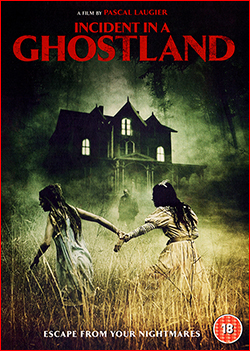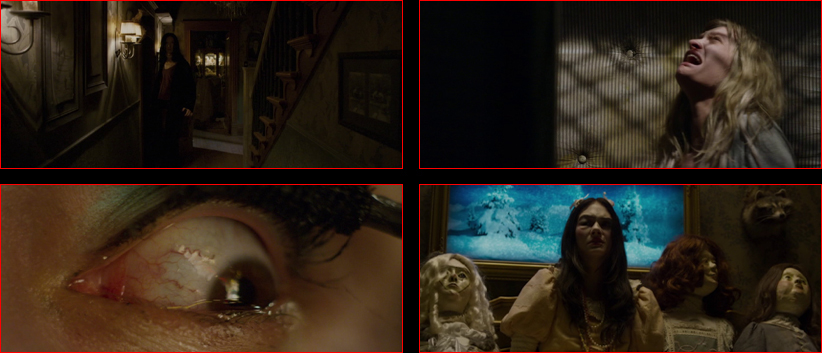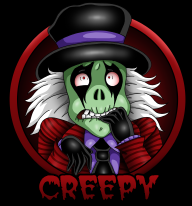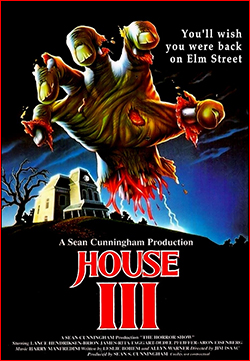 House III, aka The Horror Show, aka House III: The Horror Show has nothing to do with the House franchise. So what the hell is this supposed to be? Well, it’s a horror movie, I can say that. And like the second film, the house from Psycho is also displayed on the DVD cover, just to make you even more confused. This was actually also the official theatrical release poster. Now it just starts to look like a parody of the Italian films that capitalized on cheap, faux sequels. But the story behind this messy production is a tale of itself, which I’ll come back to.
House III, aka The Horror Show, aka House III: The Horror Show has nothing to do with the House franchise. So what the hell is this supposed to be? Well, it’s a horror movie, I can say that. And like the second film, the house from Psycho is also displayed on the DVD cover, just to make you even more confused. This was actually also the official theatrical release poster. Now it just starts to look like a parody of the Italian films that capitalized on cheap, faux sequels. But the story behind this messy production is a tale of itself, which I’ll come back to.
In this relative faux sequel, we’re in a far more gritty, urban surroundings that center around the detective Lucas McCarthy (Lance Henriksen). He and his partner are on the huntdown of the deranged serial killer Max Jenke (Brion James). He goes by the nickname “Meat Cleaver Max“ and he has body counted the city for too long. The party’s over when he gets captured and thrown in the electric chair and fried to the nether. And as Lucas has dedicated too much time and mental health to this homicidal clown, he can now at least take a deep breath, relax and maybe spend some more time with his family. Dream on, pal, because the horror show is far from over.
Because you see, Mr. Meat Cleaver comes back as a trickster demon with a mix of Beetlejuice and Freddy Krueger to fuck so much with his head to the point that the line between reality and not becomes a big fat blur. And since Lance Henriksen is a top tier working actor who can say a thousand words just with his facial expressions alone, it’s hard not to believe all the fucked-up visions he starts to see while he tries his very best to be in the moment with the family. He already struggles with PTSD and nightmares where our killer chops the head off a young girl, which he blames himself for. Now it’s up to Lucas to call a ghostbuster and chase down the ghost of Mr. Meat Cleaver, before he goes totally insane and loses both his mind and his family.
The strongest cards here are Lance Henriksen and Brion James. They’re both very intense and intimidating actors who are like thunder and lightning on screen, and give their 100%. Brion James is maybe not the most familiar name, but you certainly know his face. A great, charismatic character actor who died way too early at the age of 54 of a heart attack. RIP. There’s also some fun, practical effects here which gives some Elm Street vibes, that also the DVD covers refer to and actually got right. An overall entertaining supernatural slasher worth watching with a strong beer and fresh-made popcorn. Just make sure to pick up the Blu-ray from Arrow Videos for the complete uncut version.
So, House III/The Horror Show is far from the shitshow you’d expect considering the circumstances – especially when one of the screenwriters is credited as the legendary, the one and only Alan Smithee himself. The film manages to stand on its own feet for what it is. So what did actually go so horribly wrong here, apart from the fake, clickbait title? The film was originally going to be a third entry in the House franchise, but when a new distributor came on board (MGM) they wanted to go for another approach with killer Max, where they saw a new potential iconic villain like Freddy Krueger. Yeah, you don’t say. They were maybe into something here though, as this was Brion Jame’s favorite acting gig of all the 178 films he starred in. That never happened, of course.
Director David Blyth (Death Warmed Up) from New Zealand was fired a short time after the production started and was replaced with newcomer James Isaac. And again, despite the circumstances, he does a decent job, I would say. He also made the schlock classic Jason X (2002) and a couple of other obscure horror films before he died of blood cancer at age 51. RIP. The script was changed to the point that the original screenwriter, Allyn Warner, had no interest in being associated with the film, and thus painted himself behind the notorious Allan Smithee pseudonym. And since both Allan and Allyn sounded too similar, and Alan was at that time apparently written with two L’s, he was credited with one L. Just in case.
The film was released as The Horror Show in America, and as House III in other countries. And of course, it was a flop, despite having the same modest budget, of 3 million dollars, as the previous two films. House III/The Horror Show followed up with House IV in 1992, a direct-to-video sequel to the first film. I’ve yet to see that one, so maybe another time.



Director: James Isaac
Writers: Allyn Warner (as Alan Smithee), Leslie Bohem
Country & year: USA, 1987
Actors: Lance Henriksen, Brion James, Rita Taggart, Dedee Pfeiffer, Aron Eisenberg, Thom Bray, Matt Clark, David Oliver, Lewis Arquette, Terry Alexander, Armand Asselin
IMDb: https://www.imdb.com/title/tt0097527/
Prequels:
– House II: The Second Story (1987)
– House (1985)
![]()
